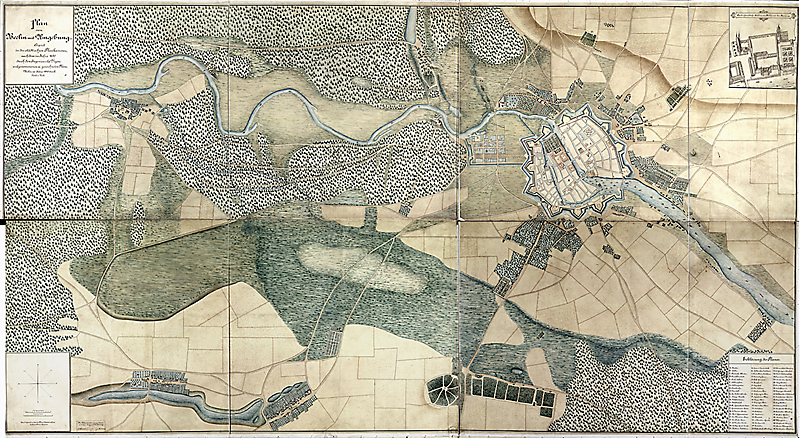Tiergarten Transformation
“
— ”
In the sixteenth century, Tiergarten was a private forest owned by the monarchy that was turned into a royal hunting ground near the fort walls of the then Berlin-Koln territory. The land was fenced off and turned into a game reserve by Prince Joachim.1 The first gardens were opened for general public use around 1740 and the forest was transformed by landscape architect Knobelsdorf in a Baroque fashion, carving spaces for delineated walkways, geometric green rooms, and salons.2 Tiergarten was used as a landscape park from the late 18th to 19th century which also incorporated landscape designs by Peter Joseph Lenne who reinforced the system of water streams to create drainage in this largely alluvial forest.3
After World War Two, a large part of the garden was destroyed and the Tiergarten became part of the British-occupied sector of West Berlin. The park underwent a sudden, violent change: much of the wooded areas were felled and turned to firewood due to the shortage of coal, and the now-empty fields were turned into temporary farmland by order of British troops,4 turning it into agricultural land. There were around 2,550 plots of land available for growing potatoes and vegetables. In the decades following, the park was restored back to a public garden with its monuments.
The garden was owned by the monarchy until 1881 but soon after the Emperor abolished its rights to the forest, Tiergarten was added into the new district of Berlin, and within the city limits so that the people may use and uphold it.5 Currently, the municipality of Berlin maintains the park and its upkeep and it is the second largest public park in Berlin with an underground metro-line.

Image source:
Plan of Berlin with surroundings, 1685. Landesarchiv Berlin and Open Street Maps
References
1. Tate, Alan. Great City Parks. Routledge, 2015.
2. Puffles and Honey. “A Stroll in Tiergarten.” The Beary Adventures of Puffles and Honey (blog), September 6, 2020. https://pufflesandhoneyadventures.wordpress.com/2020/09/06/a-stroll-in-tiergarten/.
3. Puffles and Honey. “A Stroll in Tiergarten.” The Beary Adventures of Puffles and Honey (blog), September 6, 2020. https://pufflesandhoneyadventures.wordpress.com/2020/09/06/a-stroll-in-tiergarten/
4. “Tiergarten (Park).” In Wikipedia, March 6, 2022. https://en.wikipedia.org/w/index.php?title=Tiergarten_(park)&oldid=1075560620.
5. “Tiergarten (Park).” In Wikipedia, March 6, 2022. https://en.wikipedia.org/w/index.php?title=Tiergarten_(park)&oldid=1075560620.
1. Tate, Alan. Great City Parks. Routledge, 2015.
2. Puffles and Honey. “A Stroll in Tiergarten.” The Beary Adventures of Puffles and Honey (blog), September 6, 2020. https://pufflesandhoneyadventures.wordpress.com/2020/09/06/a-stroll-in-tiergarten/.
3. Puffles and Honey. “A Stroll in Tiergarten.” The Beary Adventures of Puffles and Honey (blog), September 6, 2020. https://pufflesandhoneyadventures.wordpress.com/2020/09/06/a-stroll-in-tiergarten/
4. “Tiergarten (Park).” In Wikipedia, March 6, 2022. https://en.wikipedia.org/w/index.php?title=Tiergarten_(park)&oldid=1075560620.
5. “Tiergarten (Park).” In Wikipedia, March 6, 2022. https://en.wikipedia.org/w/index.php?title=Tiergarten_(park)&oldid=1075560620.